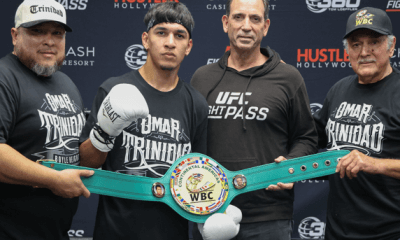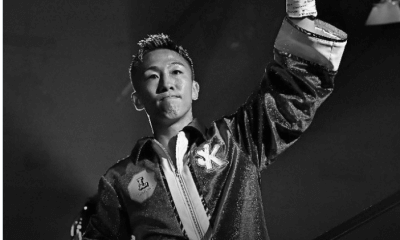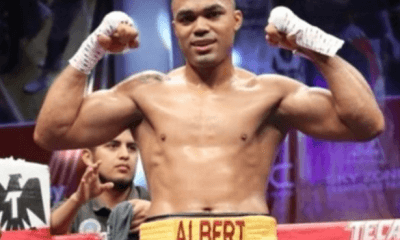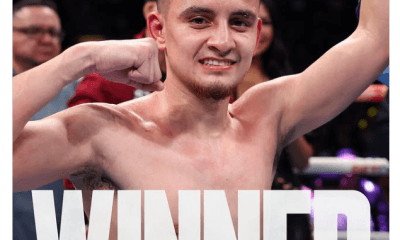Featured Articles
The Top Ten Middleweights of the Decade: 2010-2019
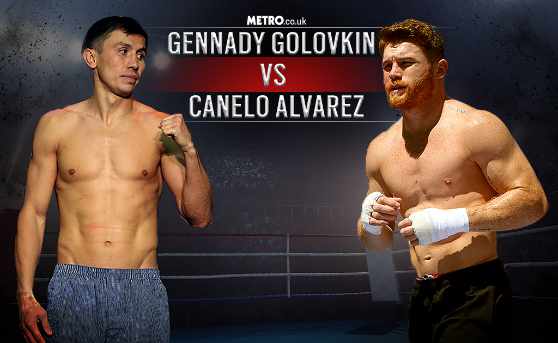
Looking over the 160lb division of the last decade was tough. A concrete top three was difficult to order for reasons that will become apparent and no natural number ten presented itself; between ten and three were a series of interchangeable middleweights, none of whom made an irrefutable case over the man above him, this, despite their having a reasonable record of matching one another.
An average decade then, for the sport’s number two division, but no less fascinating for all that.
Rankings are by TBRB excluding 2010 to 2012 when Ring rankings are used.
10 – Dmitry Pirog
Peak Ranking: 5 Record for the Decade: 6-0 Ranked For: 41% of the Decade
Dmitry Pirog appears, at first glance to be an inclusion based upon potential and being frank that is a matter in his ranking. Pirog was slated to meet Gennadiy Golovkin in the summer of 2012 when he ruptured a disc in his back while striking a tire with a sledgehammer in the mountains of his native Russia. He never recovered. While Golovkin probably would have been too much for the man they called “The Grandmaster”, even at just 20-0, he would likely have been one of the better fighters Golovkin would ever have bettered.
For confirmation of this, see Pirog’s graduation night victory over Daniel Jacobs in July of 2010. Jacobs would get better but when the two men fought as elite prospects he was basically outclassed by the Russian. Pirog ran a savage pressure but it was his defense that set him apart. He was not impossible to hit, nor even difficult for the right punch, but he had superb reactive head and upper-body movement that saw him consistently ditch Daniel’s best blows, and in fact the best punches of almost every fighter he ever fought.
Prospect watchers know well the nagging doubt created by a leaky defense; Pirog’s was tighter than that of many more experienced men. It was his offense that marshalled Jacobs, however, who was driven to the ropes over and over again despite the demands of his corner and who, after being out-fought and out-thought for most of the preceding rounds, was terminated by a brutal right hand in the fifth. He remains the only man to have stopped Jacobs despite the kind attentions of Golovkin and Saul Alvarez.
Pirog never recovered from that ruptured disc and was almost certainly cheated of a much more significant legacy as a result. I’ll stick my neck out here and say he’d have landed in the top four had he remained uninjured. As it is, he is as reasonable a pick for the #10 spot as I can muster.
09 – Peter Quillin
Peak Ranking: 2 Record for the Decade: 14-2-1 Ranked For: 46% of the Decade
Peter Quillin survived a rough upbringing to become one of the signature contenders of the decade. For all that he failed to deliver on what seemed legitimate potential before being chased out of the division by Daniel Jacobs in 2015, Quillin had some pretty moments. Chief among them was perhaps his tenth-round stoppage of contender Gabriel Rosado in 2013. Some of this was genuinely gorgeous, feinting with the jab before hooking around the corner, delightful small-increment pressure with sudden two-piece attacks tagged on to the thinking footwork.
Quillin’s best though was his massacre of Hassan N’Dam N’Jikam. That fight had come a year earlier in something of a crossroads fight for both men, each sporting a ledger of 27-0. Quillin dropped N’Jikam over and again with a beautiful array of left hands. N’Jikam visited the canvas on six separate occasions.
Quillin didn’t deliver in the end and given his rags-to-riches story and healthy interest in boxing’s history, that seemed a shame to me; but he did enough and looked well enough to slip in to one of the two contested slots at the bottom of the ten.
08 – Felix Sturm
Peak Ranking: 1 Record for the Decade: 7-3-2-1 Ranked For: 49% of the Decade
At first glance, number eight might seem a tad harsh where Sturm is concerned but look closer.
First, he’s hitting barely 50% for a win ratio for the decade – and his best win in the 10s is Matthew Macklin. Not that this is anything to be ashamed of, Macklin was a good operator and ranked #3 in the world at the time of their meeting, but it’s a tough hook to hang a legacy on.
The problem, however, is that many observers felt that Sturm was not deserving of the decision against Macklin and it remains one of the most controversially scored fights on the fascinating Eye on the Ring website. What is clear is that Macklin out-landed Sturm, and herein lies the great strength, weakness and the most interesting wrinkle in Sturm’s fighting style. One of the most patient fighters I have ever seen, Sturm covers up, invites pressure, and lets his opponent work. This was a red flag to Macklin’s bullish instincts, and he spent the entire fight pushing forwards, working the body with veracity, bringing volume and aggression. Sturm responded not by running but by staying in the pocket and ceding round after round but looking to set up sneak counters, a double-left-jab, hard uppercuts. In almost every round he landed the quality work, appealing to a certain kind of eye.
It’s easy to find an argument for Macklin but the fight was indisputably close, and Sturm indisputably won the eleventh and twelfth. His style is one of natural economy. Macklin started to look ragged by comparison as early as the eighth. I scored it 115-113 Macklin but have no problem with a close Sturm card.
Still, his number two scalp that decade was either Sam Soliman or Sebastian Zbik, depending upon who you prefer. Sturm belongs here but would have been shaded in a better decade.
07 – Billy Joe Saunders
Peak Ranking: 3 Record for the Decade: 24-0 Ranked For: 35% of the Decade
Billy Joe Saunders spent most of the decade duelling middleweights before departing for 168lbs, but it is for two performances he makes the ten, one desperate, one so smooth as to be comparable to some of the truly great stylists. Such are the vagaries of boxing style and Billy Joe’s own maddening inconsistency.
The smooth was turned in against number four contender David Lemieux in late 2017. This was the fight where Saunders famously made the limited but brave Lemieux miss by such a margin that he was able to take the time to feign looking to the bleachers for a punch that flew wide. There was so much more to this performance than that distilled moment though. Saunders boxed with genuine brilliance, repeatedly making Lemieux miss him behind a southpaw jab by slipping and shifting to his own right, counterintuitive because it opened him up to Lemieux’s square attack. Saunders was never troubled. No puncher, he was never going to stop his rugged opponent, but he won every round. It made him a legitimate opponent for both Daniel Jacobs and Gennadiy Golovkin; neither fight materialized.
Two years earlier, almost to the day, the other Saunders was manifest in Manchester against Irishman Andy Lee. The temptation here is to give Lee, a good fighter who was in contention for the #10 spot, more credit, but Saunders dominated the first three rounds, scoring two beautiful knockdowns. The first, a slip counter of the absolute highest order, was a thing of fistic wonder.
Then he dropped off dramatically, his workrate and his strategic plan both floundering. Saunders got his win by majority decision, those knockdowns the difference.
Now 168lbs has him, but his incomplete legacy at one-sixty enough to scrape him the number seven spot.
06 – Miguel Cotto
Peak Ranking: Ch Record for the Decade: 7-4 Ranked For: 23% of the Decade
Miguel Cotto’s paper record for the decade and his brief sojourn at 160lbs make him the lowest ranked of the dead locks for this list. Cotto unquestionably belongs but can rise no higher.
His keynote victory over world middleweight champion Sergio Martinez has been dismissed by some given how Martinez’s knees had begun to creak but it is worth remembering that Cotto himself had begun to fade having dropped decisions to Floyd Mayweather and Austin Trout in consecutive fights at 154lbs; so his first round performance against even a struggling Martinez was astonishing.
The champion looked unsteady on his feet, yes, but Cotto’s left hand lead was rarely better, whether he was hooking to the body, jabbing upstairs, or feinting and throwing a stealing, cuffing left hook; it was clear from the first that whatever remained of Martinez was not going to be good enough for Cotto; so it proved, and the Puerto Rican legend was king.
Cotto only had one more win at the poundage, but it was over a second man to make this list in Daniel Geale. Geale is a name, less renowned than that of Martinez and with good reason, but in many ways, it was the more important win. Cotto dominated Geale, a legitimate middleweight, physically as well as technically, hurting him throughout with the left and up-ending him in four. It confirmed him a legitimate middleweight.
For all that, Cotto is exactly 2-1 at middleweight, and when he dropped his title to Saul Alvarez in his next contest, his transient visit to the division was over. Both Geale and Martinez were creaking when he got to them but two wins over men on this list, plus the lineal championship make him a lock.
05 – Daniel Geale
Peak Ranking: 1 Record for the Decade: 10-4 Ranked For: 51% of the Decade
This was an extremely close call. Essentially the coin was in the air and it came down “Daniel Geale”.
Geale was defeated by Miguel Cotto, albeit at the end of his career, and Cotto was the legitimate champion whereas Geale was a strapholder and ranked the #1 contender. But Geale was a career middleweight; while Cotto’s relationship with 160lbs was fleeting, Geale fought two generations of middles and in his purple patch in 2011 and 2012 bears scrutiny.
He traveled to Germany in 2011 and in front of a partisan crowd outworked a game Sebastian Sylvester to a deserved decision victory over the world’s #3 contender, and better yet, returned there for a showdown and unification bout with Felix Sturm. Here too he came away a winner in a fight so close as to come down to the eleventh and twelfth, both bagged by Geale. Had Sylvester been blessed with Sturm’s jab, or Sturm with Sylvester’s work-rate, Geale could have lost either fight, but as it was he found the gaps in both styles to take decisions on enemy territory. Probably Geale was less than elite in everything that mattered, he was quick but not fast, a stinging puncher but not a powerful one, organized but not dynamic; for grit and work, however, there is no better middle on this list.
Like all fighters who rely upon stamina to get there, once he lost a step he was a hugely diminished fighter and that he lost three of his last five fights is a reflection of that. Geale is not a top five decadal fighter in sense of class and is reflective of what was a middling decade at 160lbs, but despite his past-prime loss to Cotto it is hard to see him ranked below the transient Puerto Rican here.
04 – Daniel Jacobs
Peak Ranking: 2 Record for the Decade: 18-3 Ranked For: 48% of the Decade
Another coin flip: the difference between Danny Jacobs and Geale wound up being not his wins, but his losses, two brave showings against the two pre-eminent middleweights of his era, Gennady Golovkin and Saul Alvarez. He met Golovkin in March of 2017 in a fight that was close, controversial and absorbing, Jacobs keeping a seemingly tentative Golovkin honest with a combination of size and power that the great Kazakhstani had perhaps not seen before. Two years later he entertained Alvarez and once again dropped a close decision, though on this occasion there was less controversy; Jacobs then bid farewell to 160lbs for super-middleweight.
The key victories that make him a legitimate if uninspiring number four were also fascinating, none more so than his single round dispatch of the world’s #2 contender, Peter Quillin. Jacobs, perfectly capable of engaging in and winning a technical fight, as he proved in 2018 in edging out Sergiy Derevyanchenko over twelve, chose against Quillin a shoot-out. Chasing Quillin back to the ropes with a sound jab he then forced the referee’s hands (arguably a little prematurely) with a mix of looping and compact right-hands.
These two contrasting victories and these two losses describe for us Daniel’s strengths and limitations. They make him difficult to rank below the likes of Geale and Cotto, and impossible to rank above any of the members of the undisputed middleweight top three of the 2010s.
03 – Sergio Martinez
Peak Ranking: Ch. Record for the Decade: 7-1 Ranked For: 50% of the Decade
Sergio Martinez moved up from 154lbs just in time for the beginning of the decade. Eight contests comprised the remainder of his career, but Martinez did some damage.
His definitive decadal performance was his title winning effort against Kelly Pavlik. Martinez won the first four rounds with his low-handed, circling style, prioritizing movement, hitting when the opportunity presented itself and forcing Pavlik to reset over and again. Pavlik dominated the middle rounds with faster pressure, accepting that he would be hit but allowing it in order to deliver his own offense. The final adaption was Sergio’s, and it was impressive. Instead of running, he elongated his visits to the pocket, shoe-shining a bit but throwing four and five punches where he had previously thrown one or two. He thrashed Pavlik in the final third, reducing him to a mask of gore, a desperate two-step flinching misses. Re-watching that fight, I was impressed by Sergio’s marked superiority over a reigning middleweight champion of the world. It was not insignificant.
Martinez did not rest on his laurels as a champion. He visited the top five on two further occasions, his terrifying knockout of Paul Williams perhaps the definitive stoppage win of the whole decade, middleweight or otherwise; his twelve-round domination of Julio Cesar Chavez Jnr. was almost as impressive in its own way but also signaled the beginning of the end. Martinez broke his left hand in the fourth and damaged his knee during a shocking visit to the canvas in the twelfth. Sergio had tipped over into the realms of the veteran.
He did a fine job on a duo of British contenders in Matthew Macklin and Martin Murray, but there was perhaps a feeling that he had come for a payday in his final fight against Miguel Cotto. Sure enough, his knees betrayed him, and he was pulled from the fight in the tenth round of a fight Cotto was dominating.
02 – Saul Alvarez
Peak Ranking: Ch. Record for the Decade: 24-1-1 Ranked For: 37% of the Decade
Squeaking in in front of Argentine Sergio Martinez is Mexican Saul Alvarez, who took the championship from the man who usurped Martinez, Miguel Cotto. Cotto was absolutely superb in defeat that night, boxing as he had against the menace of Shane Mosley some years earlier and actually pulling out the win on some cards, although the majority saw it for Alvarez. Personally, I was underwhelmed by Saul’s performance and expected a series of shallow defenses followed by his ceding the title to either Gennadiy Golovkin or the emerging Daniel Jacobs.
Instead, Alvarez got the embarrassing defense out of the way early via a smearing of Amir Khan then defeated both Golovkin and Jacobs in 2018 and 2019 respectively. What this means is that Alvarez has the scalps of three men from this list dangling from his waist, which is the gold standard at middleweight.
The devil, of course, is in the detail.
Alvarez first met Golovkin in September 2017, in a fight that was rendered a draw, most, but not all ringsiders seeing the fight for Golovkin, Boxing Scene and the Associated Press both seeing it a draw. Undeniably it was close, and because it was close, I honor it here. 115-113 Golovkin was my own card and that’s certainly nothing like enough to cry robbery. The drawn fight stands.
A rematch was staged almost a year to the day after the first fight and if anything, it was even more controversial. The jab appeared to have just slipped Golovkin over the line, but, once again, most observers scored it a very close fight. The majority of cards fell into the range 115-113 to 113-115; those with wider cards tended to be outliers. I was something of an outlier myself here in having the fight a draw (though I was not alone – Sports Illustrated, Ring Magazine, Forbes and the BBC were among the numerous drawn cards). Once more, then, for the purposes of this list, the win stands.
His win over Daniel Jacobs certainly stands, though even this was a fight not without controversy and controversy too stalks the Mexican at 154lbs. What is Alvarez then? Is he a fighter of great talent who fights down to his opponent’s level? Something less than that, somehow manages to squeeze wins out by the barest of margins against opponents with serious physical advantages? Something darker, a favored son of an industry that favors the cash cow above all?
Whatever else, he is the number two middleweight for the decade gone by.
01 – Gennadiy Golovkin
Peak Ranking: 1 Record for the Decade: 23-1-1 Ranked For: 83% of the Decade
First thing’s first: Alvarez’s victory over Gennadiy Golovkin is acknowledged for the purposes of the list but Alvarez is ranked below Golovkin; how does that work?
Although Alvarez defeated Golovkin, the fight was close enough that it could have, and perhaps should have, been scored for the Kazakhstani. This is not the key though. Even if Alvarez had knocked Golovkin out, Golovkin would still have outranked him for the decade. There are two reasons for this. The lesser of these is time served: Golovkin spent the entire decade battling middleweight and Alvarez was but a blink in his eye, for all that he did great work in his brief visit. More than that is the destruction that Golovkin wrought between January first 2010 and December thirty-first 2019. It is surprising to me how quickly the terrible damage done to the middleweight division has been forgotten in favor of arguments over what “really happened” in the Saul Alvarez fight.
It began, for me, with Gregorsz Prokosa, the #4 contender and a unique, riffing southpaw who on paper appeared to be an enormous challenge for a technician, even one who seemed as composed as Golovkin. It was a slaughter. The stoppage itself was glorious but Golovkin’s pressure, jab, shepherding footwork and most of all, his calmness of demeanor, heralded the coming of royalty.
This was September of 2012. What followed over the next five years was nothing short of a reign of terror. Golovkin dispatched six middleweights from the top five; a total of nine contenders from the top ten. This is not normal. It is difficult to exaggerate how difficult it is for a fighter to pick off nine ranked contenders from one weight division in a given decade. If we see it twice more in the entirety of this series, I will be surprised, but it’s certainly unequalled between heavyweights and middleweights.
For a marquee win, Golovkin is looking at Daniel Jacobs, which is a little unsatisfactory, deepening the frustration surrounding the Alvarez result; but it is worth reiterating that Golovkin just doesn’t need it. He dominated the field for better than half of the decade and the decade is what we are interested in here.
Golovkin is number one.
For the other decadal number ones ranked so far, see the heavyweights, cruiserweights, light-heavyweights and super-middleweights accordingly.
Check out more boxing news on video at The Boxing Channel
To comment on this story in The Fight Forum CLICK HERE
-

 Featured Articles3 weeks ago
Featured Articles3 weeks agoThe Hauser Report: Zayas-Garcia, Pacquiao, Usyk, and the NYSAC
-
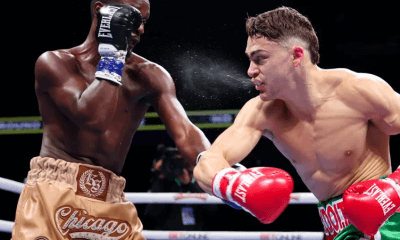
 Featured Articles2 weeks ago
Featured Articles2 weeks agoOscar Duarte and Regis Prograis Prevail on an Action-Packed Fight Card in Chicago
-
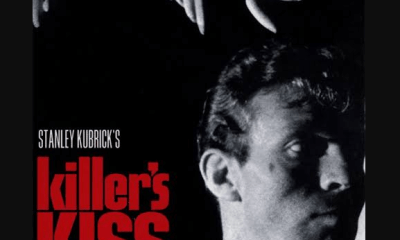
 Featured Articles1 week ago
Featured Articles1 week agoThe Hauser Report: Cinematic and Literary Notes
-
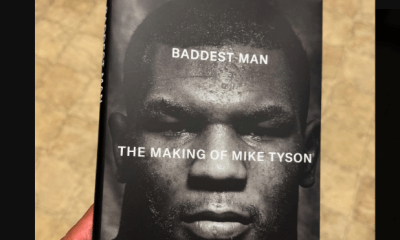
 Book Review4 days ago
Book Review4 days agoMark Kriegel’s New Book About Mike Tyson is a Must-Read
-
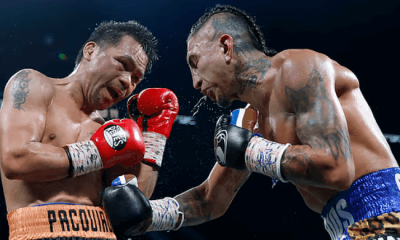
 Featured Articles4 weeks ago
Featured Articles4 weeks agoManny Pacquiao and Mario Barrios Fight to a Draw; Fundora stops Tim Tszyu
-
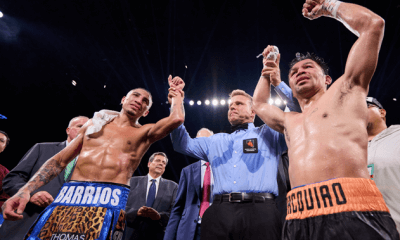
 Featured Articles4 weeks ago
Featured Articles4 weeks agoArne’s Almanac: Pacquiao-Barrios Redux
-

 Featured Articles3 weeks ago
Featured Articles3 weeks agoRemembering Dwight Muhammad Qawi (1953-2025) and his Triumphant Return to Prison
-
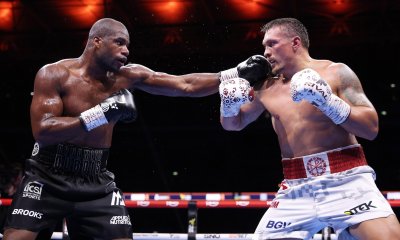
 Featured Articles4 weeks ago
Featured Articles4 weeks agoOleksandr Usyk Continues to Amaze; KOs Daniel Dubois in 5 One-Sided Rounds


